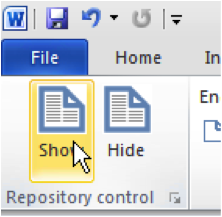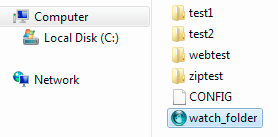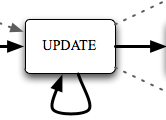
Show MS Word Add-in for repository deposit
The target of current repository software is completed works.
The principal contribution of the DepositMO project is to provide new tools to support deposit of in-progress digital works. This is a significant change from current methods of repository deposit involving completed works.
To do this requires two new methods: deposit tools built into the authoring applications, and a means for these applications to communicate and interact with the repository software, providing the user with status and update responses. In essence this is like replacing your computer hard drive, instead saving the content destined for the repository directly in that repository and treating it as a network drive. Saving this content to a repository iteratively as it develops, as you do when saving on your local computer, requires the same functionality and assurance of correct execution, security and privacy. As we shall see, however, the expectation of description and metadata for a repository adds complexity compared with the simple method of save-to-hard-disc-and-add-filename.

Watch Folder, repository deposit via a standard file manager
We have blogged before about the principles, reasons and advantages of this new approach to repository deposit, but apart from some early demonstration videos we have not previously described or illustrated the actual deposit tools in any detail. Post-user testing of these tools we can now rectify this omission.
There are three new elements, including two deposit tools, and a means of enhancing and updating popular repository software such as EPrints and DSpace:

SWORDv2 supports Create, Retrieve, Update, Delete
- A Microsoft Word Add-in deposit tool, to allow content in a document to be saved to, updated, or deleted from a repository during composition, without leaving the application.
- A Watch Folder deposit tool, to enable content of any type and in any format to be uploaded to a repository simply by dragging in a file manager window.
- Extensions to SWORDv2 for repository software
Of course, the second tool obviates the principle of bypassing the local hard drive, since the file manager is a record of what’s on the drive. But it means we can test deposit of a wider range of content before deposit tools are integrated with more authoring applications. Experience with building the Word deposit tool shows this is a major investment of time and expertise, as well as liaison with and support of the developer of the original application, in this case Microsoft – even when the application supports in-application plugins through APIs.
In the next three posts we will explore each of these new deposit tools in more detail, starting with the Word Add-in deposit tool.


0 Responses
Stay in touch with the conversation, subscribe to the RSS feed for comments on this post.